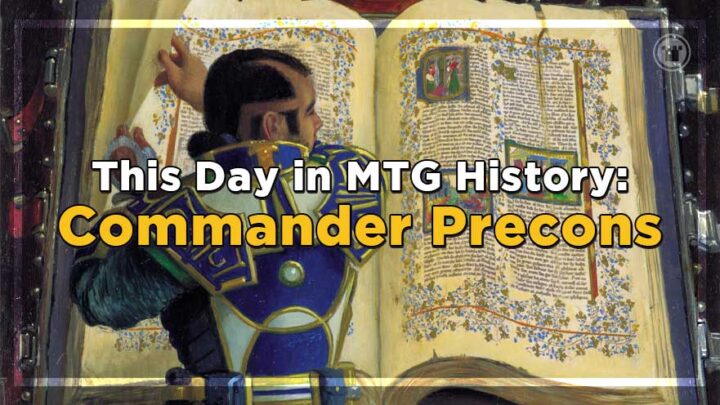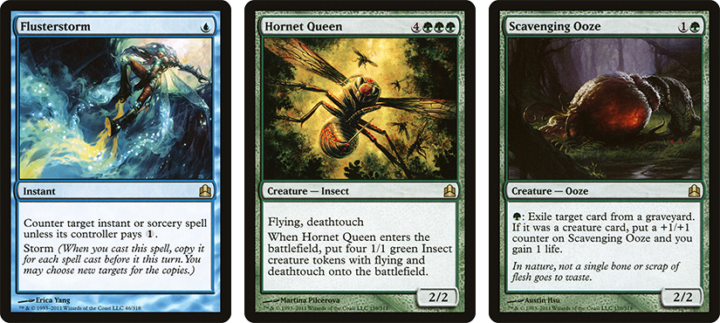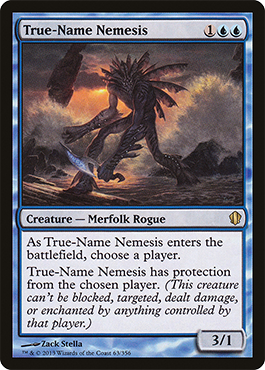Nizzahon looks at a significant event on this day in MTG history. On June 17th, 2011, the first Commander Precons were released!
Welcome to another edition of “This Day in Magic History.” Today, we’re going to be taking a look at the moment when Wizards of the Coast formally recognized the EDH format with the release of Commander, which came out 11 years ago today.
These days, it is pretty difficult not to think about Commander when thinking about Magic. After all, it is the game’s most popular format! Wizards of the Coast also releases at least one Commander set a year to support the format. Just last week, Commander Legends: Baldur’s Gate was released!
However, it has not always been this way. It was only eleven years ago today that Commander became an official Magic format. Wizards didn’t create Commander. By the time they formally recognized it with the release of Commander, it had actually been around for about 15 years! In this article we’re going to take a look at the origins of the format as well as the importance of the release of the very first Commander set.
The Origins of Elder Dragon Highlander (EDH)
So, where did EDH come from? And who gets credit for creating it? Well, as is often the case, the answer is complicated. As a historian, written evidence is the kind of thing that I put a lot of stock in. This is because it is entirely tangible, and we can see the evidence for ourselves! The earliest written evidence of the EDH format came in the July 1996 edition of The Duelist, which was Wizards of the Coast’s official Magic magazine. In that issue, they had a “House Rules” section that featured several different unique ways to play Magic. Jesus M. Lopez presented a format he created, which he called “Elder Dragon Legend Wars.” While the format is not identical to what we see in EDH today, it certainly reads like a precursor to the format. His format was recommended for three or more players, the deck had an Elder Dragon legend as its “leader,” and the deck could only have a single copy of each non-basic land. There were also some pretty complicated additional rules, involving designating other creatures in your deck as “Captains” and “Warlords,” and everyone’s deck had to be perfectly balanced with the same amount of Power and Toughness.
However, it was also in 1996 that Alaskan Magic player Adam Staley created a similar format, which he dubbed “Elder Dragon Highlander.” The “Elder Dragon” part referred to the legendary dragons from Legends, like Nicol Bolas. The “Highlander” part referred to the fact that you could only have a single copy of any non-basic land card in your deck. It comes from the 1986 film of the same name, which featured immortal warriors fighting one another. The film’s famous tagline is “There can be only one,” because there can only be one of these warriors around at a time. In Magic, “Highlander” has gone on to be used for any singleton deck.
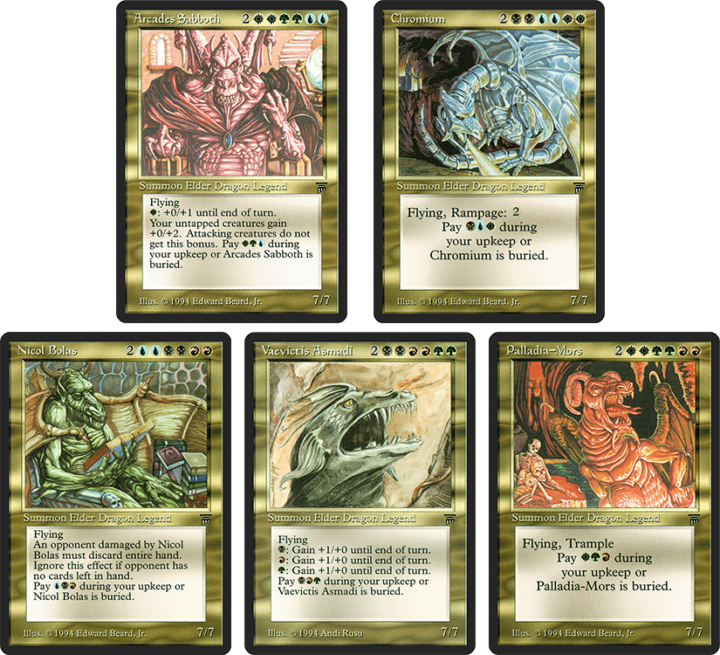
Nicol Bolas | Vaevictis Asmadi | Palladia-Mors
In both Lopez’s and Staley’s “Elder Dragon” formats, the Elder Dragons from Legends served as the commanders.
According to Adam Staley, he never read the “Elder Dragon Legend Wars” article from The Duelist, and indeed his format was significantly different and simplified by comparison. It is more clearly the direct antecedent of the EDH that we know today. While we don’t have written evidence of Staley’s invention, there are a whole lot of witnesses who learned the format from him!
From here, the game slowly spread amongst Magic players, and it was especially popular amongst Magic judges, and they would play it during downtime at events like the Pro Tour. Then, in 2004, the format really exploded. That year, Sheldon Menery wrote an article about the format for SCG, and many people were introduced to the format by his article.
From EDH to Commander
In 2005, Scott Larabee was introduced to the new format by the judges on the Pro Tour. This was important, because Scott worked for Wizards of the Coast as the Pro Tour manager. Over the next several years he would champion the format, and it would ultimately be his efforts that led to the release of Commander in 2011.
In naming the format, Wizards of the Coast shied away from “Elder Dragon Highlander,” largely because of concerns that using the word “Highlander” might result in legal action, as a result of the fact that it came directly from another intellectual property. So, in the end, they went with “Commander.” These days, “EDH” and “Commander” are interchangeable terms. With the release of Commander, Wizards of the Coast officially recognized the format, and from here on they would regularly print new sets with the intention of supporting it.
The set featured five preconstructed decks, each built around a commander with the identity of one of the three colored wedges (Mardu, Temur, Abzan, Jeskai, Sultai). These five commanders were all brand new cards, and in fact the set featured a total of 51 cards that had never been printed before.
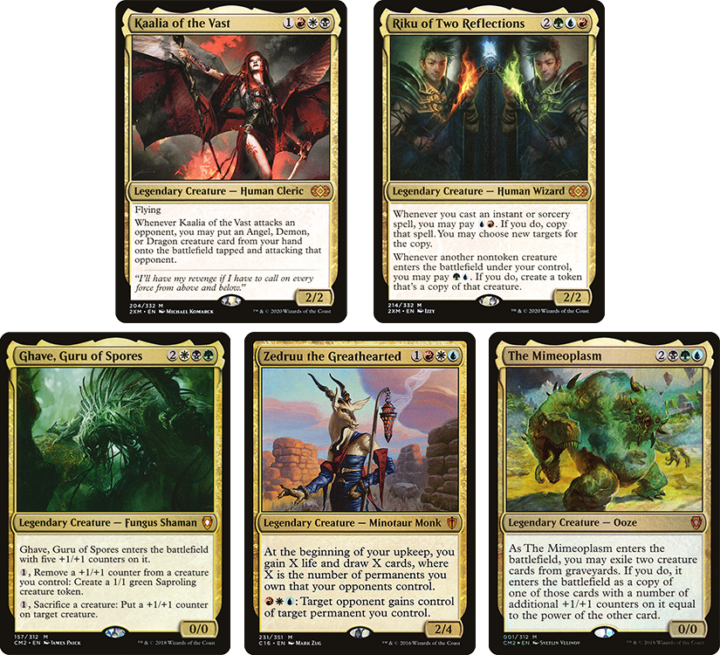
Ghave, Guru of Spores | Zedruu the Greathearted | The Mimeoplasm
Commander and the Eternal Formats
While Wizards of the Coast’s recognition of EDH is certainly the most important thing about Commander, the printing of brand new cards that skipped legality in Standard and other formats was also a big deal. Among the competitive formats, cards from Commander were only legal in Legacy and Vintage. This had never been done before, so Commander also opened the door for other supplemental sets that skip Standard legality, like Modern Horizons and Conspiracy.
Even though the decks were largely intended for casual play, there are actually several cards in the set that have had significant impacts on competitive Magic. These are: Flusterstorm, Hornet Queen, and Scavenging Ooze. Flusterstorm is a great counterspell against Storm decks, Hornet Queen has been an excellent reanimation and ramp target, and Scavenging Ooze is an efficient creature that hates on the graveyard while giving you serious value. Notably, both the Queen and the Ooze later got reprinted in Standard-legal sets. This wouldn’t be the last time that a Commander set introduced a card that saw significant play either, there are always a few cards that make some impact on the Eternal formats. Commander 2013’s True-Name Nemesis has long been one of the best threats in a variety of Legacy decks.
Parting Words
Commander 2011 marked an important turning point for Magic. From 2011 on, Commander was a focal point for Wizards of the Coast. There has been at least one Commander-focused release every year since 2011, and the latest set Commander Legends: Baldur’s Gate is out now! It will be interesting to see what cards from Commander Legends impact the Eternal formats.
That does it for this week. I’ll be back to next week to talk about another important event in Magic history!

Jacob has been playing Magic for the better part of 24 years, and he especially loves playing Magic’s Limited formats. He also holds a PhD in history from the University of Oklahoma. In 2015, he started his YouTube channel, “Nizzahon Magic,” where he combines his interests with many videos covering Magic’s competitive history. When he’s not playing Magic or making Magic content, he can be found teaching college-level history courses or caring for a menagerie of pets with his wife.

